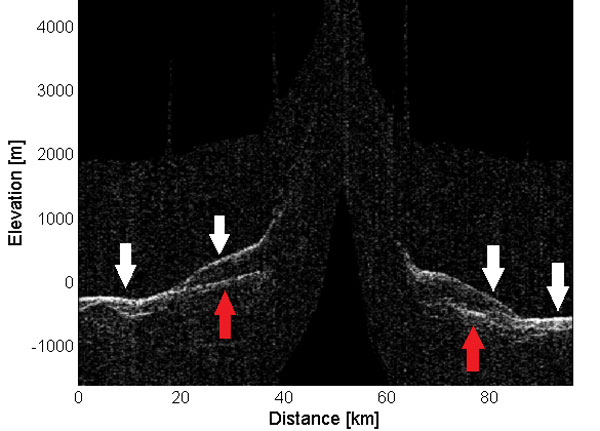As the inevitable launch of humans to Mars slowly approaches over the coming decades, we are using our best technology to study our neighbour in detail. With multiple orbiting satellites and ground surveyors, we are slowly learning more about the geology, climate, environment, and history of Mars. It feels as if every new discovery is a surprise, and we never expected Mars to be such a dynamic and complex world. With science and technology improving every year, humanity is focussing efforts on the red planet. The latest incredible discovery comes from radar data from the Mars Reconnaissance Orbiter (MRO).

The latest data indicates that vast glaciers of ice water exist longitudinally around the northern and southern hemispheres of Mars. They could not be seen in images at visible wavelengths because they are covered by the thick layer of rusty dust that covers the entire planet. But radar data can peer beneath the dust and not only see the glaciers, but measure their size and structure.

A glacier is a large chunk of ice that flows over geological time scales, and just like glaciers on Earth, the motion and evolution of the Martian glaciers can be modelled. By looking at the form and flow of the glaciers at the well studied parts of the planet, the total volume and flow of the glaciers across the entire planet can be determined.
The result? The Martian glaciers are made of 150 Billion cubic kilometres of water ice! That’s enough ice to cover the entire surface with an ice layer 1.1 metres thick. Recently I wrote about the fact that Mars had lost an entire ocean of water to space, and the lack of a magnetic field means that most surface water is evaporated by the rays from the Sun. But with the ice, the thick layer of dust is likely protecting it from evaporation.
This much ice is promising for the future of human exploration on Mars. It could provide a source of usable water to help sustain humans who venture there.
